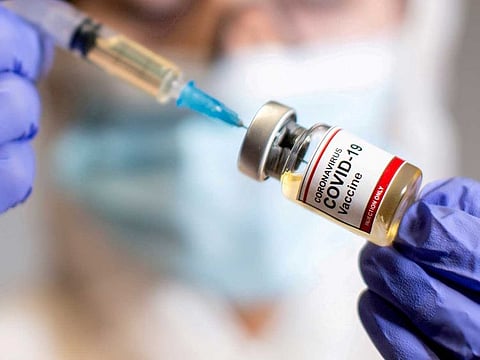Half billion COVID-19 vaccine jabs given: AFP
More than 508.3 million doses had been administered in at least 164 countries worldwide

Paris: More than 500 million doses of vaccines have been given around the world as of Friday, according to an AFP tally.
In a sign of how the pace is picking up, it took two months for the first 100 million people to get a shot, but just eight days for the last 100 million people.
By Friday at 0900 GMT more than 508.3 million doses had been administered in at least 164 countries worldwide.
Israel far ahead
Israel still leads the race by far, with nearly six out of 10 of its population having received at least one dose. More than half of Israelis have received a second dose.
The rate of infection there, which peaked at more than 650 cases per 100,000 people in January, has plunged to 67.
Next is the United Kingdom (43 percent of the population has received at least one dose), the United Arab Emirates (more than 39 percent), Chile (32 percent), Bahrain (27 percent), the United States (26 percent), Serbia (19 percent) and Hungary (19 percent).
In terms of numbers, the US is way ahead with 133 million jabs given, followed by China with 91 million and India (55.5 million).
European Union countries have given 65 million doses between them to 10 percent of the bloc's population.
Rich/poor divide
Several of the world's poorest countries have started their vaccination campaigns using doses delivered for free under the Covax scheme launched by the WHO, the Gavi vaccine alliance and the Cepi coalition.
But only 0.1 percent of the doses injected around the world were given in these poor countries, home to nine percent of the global population.
In contrast, the richest countries - which have 16 percent of humanity - have had 54 percent of the doses.
More than a quarter of all doses given so far (26 percent) were in the US.
Which jabs where?
The vaccine developed by AstraZeneca and Oxford University has been administered in rich countries as well as poorer ones, notably thanks to Covax of which it is the main supplier. It is also administered in India.
The vaccines produced by US-German Pfizer/BioNTech and the American Moderna are more expensive and harder to store. They are mainly used in rich countries.
Russia's Sputnik V and China's Sinopharm and Sinovac jabs have been administered mostly in their home markets as well as emerging and developing countries.
The American Johnson & Johnson vaccine, the first to require just one dose, has so far only been rolled out in the US and South Africa though it has been approved in Canada and the EU.
Sign up for the Daily Briefing
Get the latest news and updates straight to your inbox








